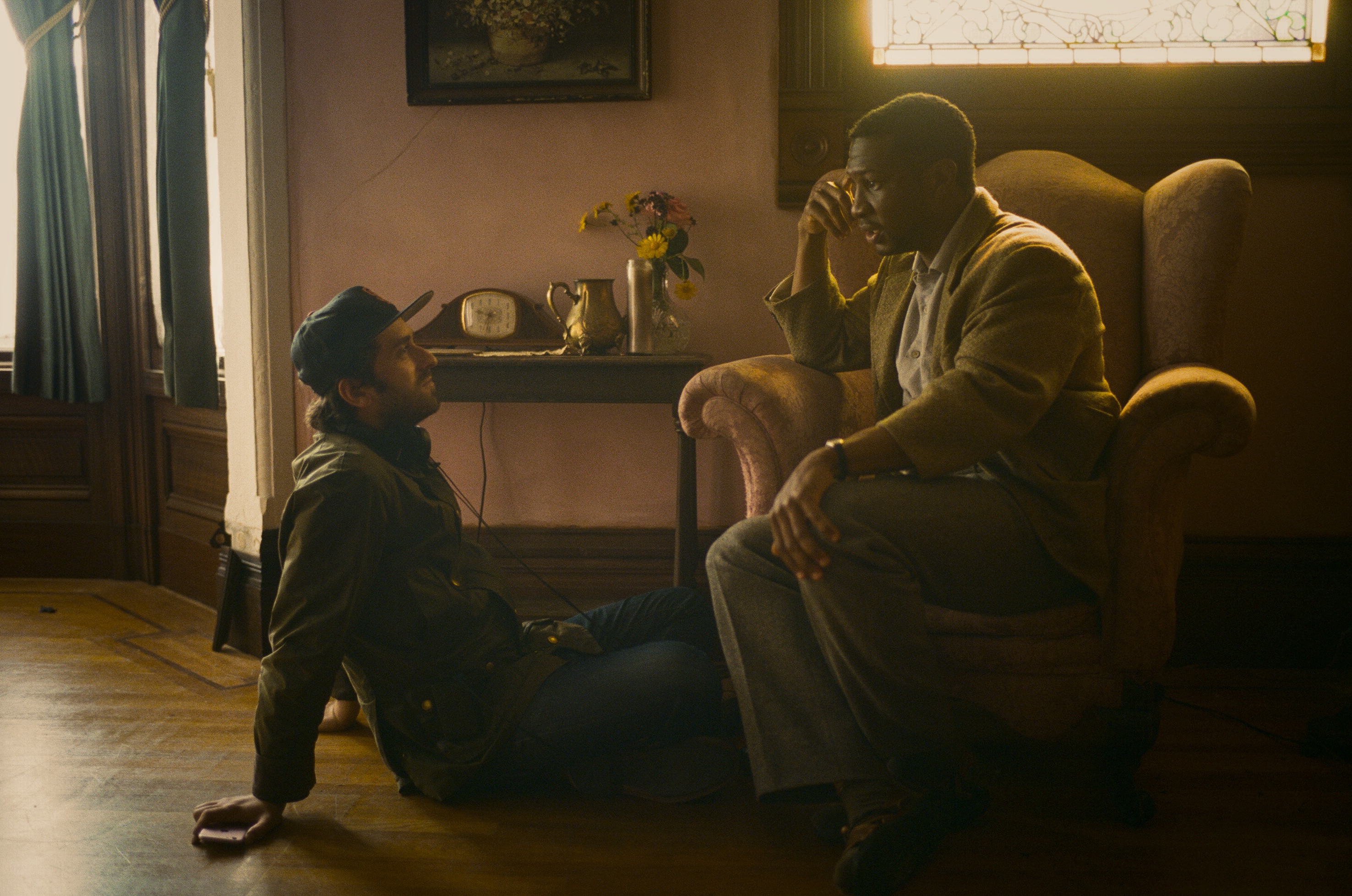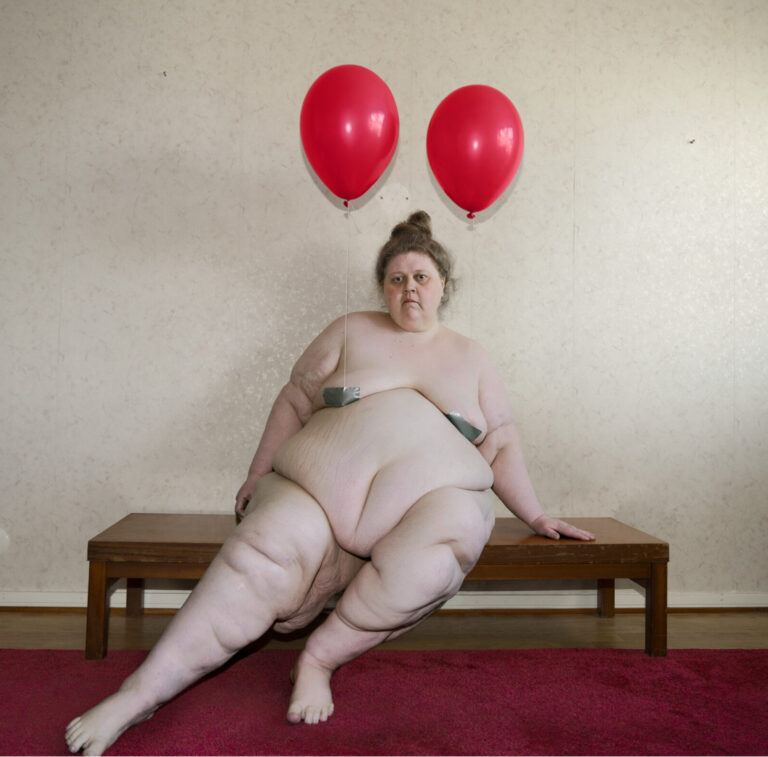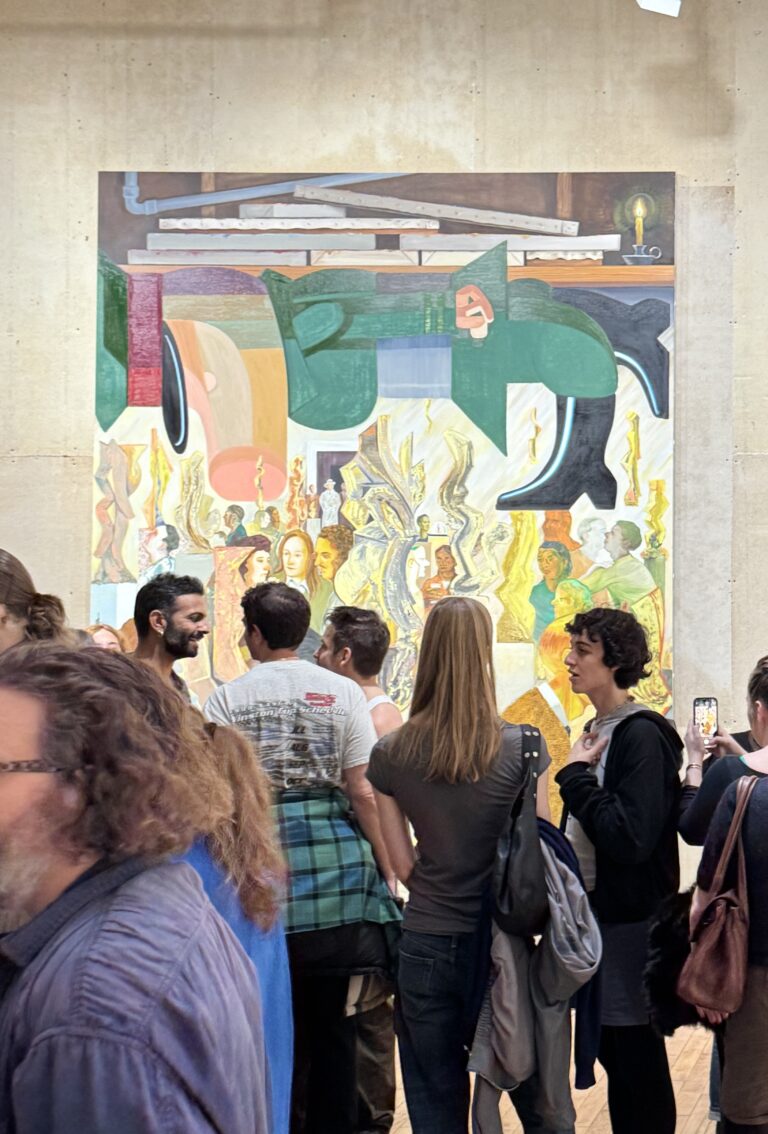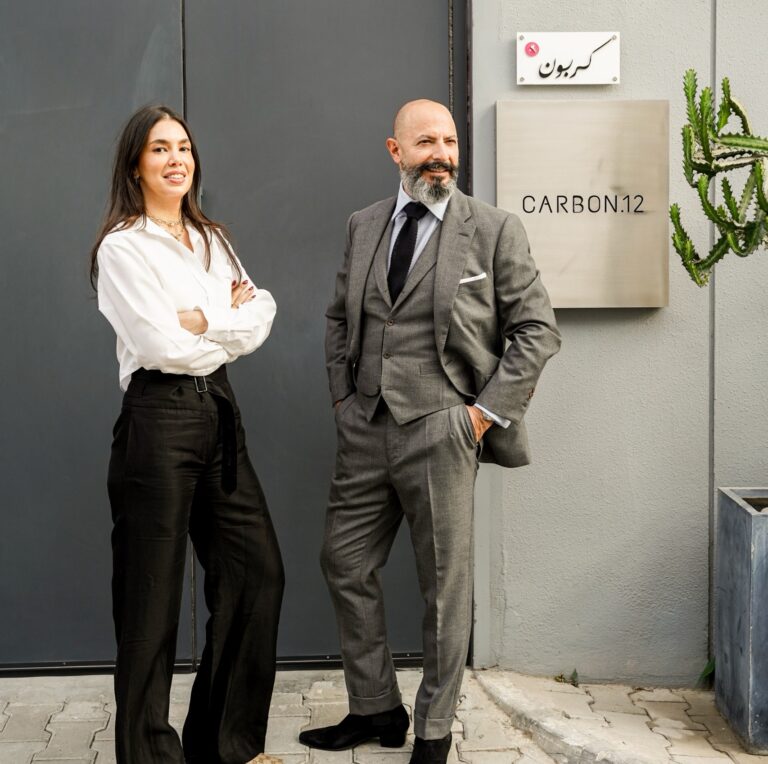
Joe Talbot and Jimmie Fails are trying to bring art back to San Francisco. Their film, The Last Black Man in San Francisco, is a love song to the old city, where beat poets and LGBTQ+ rights movement leaders alike cultivated their craft. Today, the city is being systematically gutted, as huge sums of money go to replace historic neighborhoods with buildings, alienating natives who are no longer able to afford to live in their hometown. The Last Black Man in San Francisco dissects this conflict via one man’s mission to save the San Francisco he is in love with and the best friend who never leaves his side. We spoke with Fails and Talbot, long time friends and co-creators, to talk about how they are working to take back San Francisco one shot at a time.
The film shows San Francisco’s rapid gentrification, highlighting the Fillmore District which was once known as the Harlem of the West. What was it like filming on location, being natives yourselves, telling this story? Did you feel a sense of responsibility to the city?
Jimmie Fails: Definitely. That’s something that weighed on our shoulders everyday, that we live in San Francisco, we’re from there, so if we make a bad movie we still have to go outside in front of everybody. It’s very difficult to shoot in the city because of the traffic and the people that you have to go through to get to these locations. Sometimes it was difficult. But filming a movie in my home city—it was cool.
Joe Talbot: We would leave set, and sometimes I’d get to walk home to my parent’s house, and they’d be up, excitedly waiting for me to come home. That was a treat. We grew up here. This is the place we call home. It’s not just Jimmie’s story, but it’s about the whole city in a way. We felt like we really needed to get it right, we really wanted to honor the experience of so many friends of ours who were fighting to stay here and those that have lost and have not been able to remain, despite valiant efforts.
What was it like going from that smaller place of living your life and brainstorming to a full blown production in your hometown?
JF: It happened hella fast. We were working on it for so long, and after we met the producer Plan B at Sundance in 2017 then things started moving pretty quickly. Once we met A24, what was it, like two months?
JT: Yeah. For so long we were like, please, someone give us a chance. It was surreal. Seeing the parts of this that are based on real events is a weird experience. Obviously there’s Jimmie’s life, living in his 20s, being in Fillmore as a kid, his family. And on a lesser level, the scene with the group of guys in Hunter’s Point where they’re punking Kofi was based on something that happened in high school that I was present for. One of the guys involved in that scene was there for that and was a part of it. He and I have reflected on it since, and we both felt really miserable about it at the time, but I think it was just young boys trying to be men. They thought they were helping someone by hitting him. They thought, we’re toughening him up and he’s a liability, he’s gonna bring that energy on us. To see that scene develop through multiple drafts of the script, you sort of forget that it actually happened until you’re on set shooting it. In this dusky, blue light, it’s almost surreal, like seeing a heightened reenactment. Sometimes we would be shooting literally in our backyard or just walking around the corner and it would feel spooky and surreal. For example, the big theater playing it in San Francisco, the Alamo Drafthouse, has this neon green marquee that’s in the film, and when you see it, there’s always a gasp in the audience because it’s like, oh my God, we’re in the place where this is being shot. San Francisco itself also lends itself to that weird surreal feeling outside the movie because so much of it is being gutted and replaced so quickly that it feels like you’re chasing ghosts constantly. Trying to hold on to these parts of the city that you love. In a way, it all becomes a blurry dream.

The film has such a specific aesthetic that is incredibly mesmerizing—aside from the personal history the story draws from, what were some of the other inspirations for the film and its aesthetic? How did you hope for this aesthetic to play into the narrative?
JT: The scene on the bus was inspired by Ozu’s color films and the shot-reverse-shot that’s sort of unusual. That worked for that scene because we wanted it to feel almost surreal, the world whirring by behind each of them, but their faces centered in the screen and seeing how similar they look. Then Ken Russell’s work, like Women in Love, and the energy in that. That movie is about England just after World War I, and it’s very critical of England and the hypocrisies from that period, but it also presents that world as a lush, incredible place. Those conflicting feelings, the ambivalence, is something we feel about San Francisco. It’s inspiring to see how you can be critical of a place and love it. More emotionally, Nothing But a Man was a big one. A really tender, gentle movie, and it could’ve been an angrier film, but it isn’t. I think we felt that way, too, emotionally with this. Jimmie and I were working through our collective anger about what was happening to our home, but we wanted to make something that ultimately had empathy and love and compassion, because those are the San Francisco values that we grew up on. Then visually, Vertigo, which has so much about nostalgia and longing.
It’s hard to separate the emotional from the visual, because for me, the emotional informs the visual. Jimmie is longing for home, trying to get back. He’s in love with San Francisco, he doesn’t want to break up with San Francisco. So we didn’t want to just make a movie that looked pretty for the sake of it, we wanted to make something that felt like it was out of Jimmie’s heart. That extended to the music as well, with Emile Mosseri writing these big orchestral compositions. He wanted to make it feel like it was out of Jimmie’s heart.

I thought the writing of Jimmie and Mont’s friendship was so special, and while it was of course a film about gentrification, it’s also a story about friendship and young people creating art in a sort of vacuum. You two have been friends for a long time and make work together in real life, just like Jimmie and Mont in the film. What have you learned from each other throughout the creative process?
JF: I think we’ve learned how to work with each other. I mean, we’re friends, but we learned on a more professional level in front of other people that we can’t just be best buds—how to be more professional. We learned how each other works, how to know when we need space, how to check in with each other to make sure that we can have the best collaboration, because it’s not always sunshine and rainbows.
JT: I learned how to direct from Jimmie. Honestly! Not that Jimmie’s teaching me like, hey, bro, this is how you have to set this shot up, no. I didn’t go to film school, I dropped out of high school, I never took classes to learn how to direct actors. They have such a different talent, to perform in that way is one of the hardest things to do. And to do it again and again, especially in Jimmie’s case where it comes from lived experience. That’s demanding, and brave, and vulnerable. I think when you haven’t done it, sometimes you’re naive about that. I learned how brave that is, what that requires of somebody, and hopefully it made me more sensitive and more aware. At one point, we took an acting class together and I was fucking terrible. It was so cool to do it, though, and so humbling because it’s easy to stand behind a camera and watch a performance and think that you know how to get it to a place that feels stronger. That’s part of your job, trying to help the actor, because they can’t see themselves. But to do it yourself, you see that it’s really hard. Jimmie helped me learn to articulate myself a bit more when communicating about that. You also learn how to grow from being on these sets as kids that are just me, him, and my brother to a set with 40 people, and trying to achieve that same level of vulnerability and honesty with each other in a much more public and intense space. Part of it is just learning how to hold onto that as everything else around you changes.
The characters Jimmie and Mont are unapologetic about their dreams—both with the reclaiming of the house and the writing of the play—there’s so much unconditional support. I’m interested to hear more about this dynamic, and how it was going between being inside the intimate bubble with Mont and being outside it.
JF: It felt pretty natural to me. I was just working around great people actors, so I was just taking what I was learning from them and applying it and pulling from my own experiences. Just making everything true—I think that’s your sole job as an actor, to make it true. It was like working with a big family on set so it wasn’t difficult. It was difficult for other reasons, but people always rallied behind me.
In what ways has your own experience influenced the creation of Mont and Jimmie’s?
JT: Jimmie and I have a vulnerability that we share from growing up together. We felt like we could open up with each other in a way that we maybe couldn’t with our other guy friends. I think that that bleeds into the movie and the way that we wanted to tell it. It also gets you through hard times in your life, because when you’re a boy growing up you don’t always feel like you get to be vulnerable or gentle. Even growing up in San Francisco, which is a very liberal city, there’s these pressures, and whatever pressures I felt as a white kid, a lot of my friends who are not white had 10-fold. So it I think that, for us, that was something that, in our own different ways, we cherished. But then I got to step back and see, when we met Jonathan Majors, how he became like another long-lost brother. It was hella cute to see him and Jimmie start to fall for each other as best friends. Because usually there’s a bit of posturing with guys, and there just wasn’t. They were inseparable. It went way beyond getting ready for a film. From my perspective, getting to watch it happen as a director is wonderful because it’s important for this movie to convey this feeling, this closeness. But as a friend too, it’s beautiful to watch a friendship take form. That’s why the scene of them skating in the beginning is so crucial—as soon as Mont puts his hands on Jimmie’s shoulders as he mounts the skateboard with him, helps him steer through the city, you know those guys are best friends.
JF: We weren’t acting like friends, we just are friends.

There are so many things to take away from the film about friendships, gentrification, art, family. What did you want your audience to take away from it?
JF: Love. That’s corny, I know. But that’s the main thing. It’s what got this movie made. But also, for gentrifiers, it should be sort of educational in terms of San Francisco as a city, understanding a few of these places that you might not see, that they don’t put on the brochures for tourists.
JT: There are these stories that get told about the city. We’re all in our bubbles—we’re natives, most of our friends are natives or long-time San Franciscans. The stories that we were raised on, which are part of the movie, they’re defining things in our lives. Where our ancestors came from, their upbringing, what San Francisco was, the bloody battles that were fought here in the ’60s and ’70s to define San Francisco values that we still cherish and are afraid are being lost.
It wasn’t until recently that I realized that the newly arrived have their own stories. I was walking with someone who works for Lyft, and we were walking through an area that used to be a black neighborhood, and she was saying how Lyft really helped revitalize this neighborhood. And I was like, that is the biggest load of bullshit that I’ve ever heard in my entire life. But we all spin our stories of what the city means to us and what we think our contributions are.
In the case of the film, it both deals with mythic-like stories and emotional truths. There are very real losses happening in San Francisco. You hear people say ignorant things like “cities always change, it’s natural.” There’s nothing natural about gentrification. In many ways, it’s the least natural force in the world. It’s people with money (developers, real estate agents, city government) who are coming in with very deep, calculated plans for something that shifts a neighborhood. We know that it’s very hard to fight against that because there’s a lot of money and power behind those changes, so we wanted to make a film that was one person’s story about what is great about our old San Francisco. The intergenerational conversations we grew up having with people like Danny Glover who in real life was part of defining San Francisco values. He was at the strikes in city at SF State in 1968 and worked in city government. We wanted to make a film that captured that feeling of what our city was and what we hope it can still be. In a city that has pushed out artists and made it very difficult to exist as an artist—it’s certainly not the place where the next wave of beat poets or musicians will come to make their name in a way that they once did—it’s up to the natives to tell our story. It’s been so inspiring to see how many people are writing us saying, I went home and wrote poetry after I saw the movie, or I just started painting and I haven’t painted in years. There’s an energy here that we haven’t felt in a long time. In New York and LA, there’s constantly people creating, but in San Francisco, oddly enough, you don’t see that very often. It feels like we’re the last artists in San Francisco sometimes. But now, there’s this energy in the air here that is life-affirming. After growing up on all of this art that made us want to make art, it’s nice to feel like we have a small hand in bringing that back.
JF: Damn, he’s just saying everything.










 in your life?
in your life?

